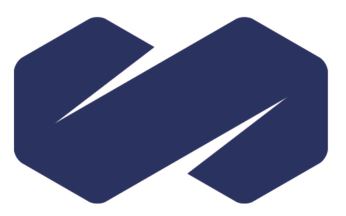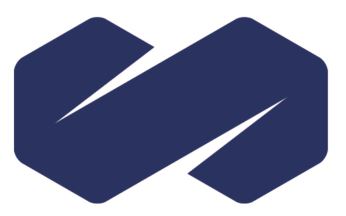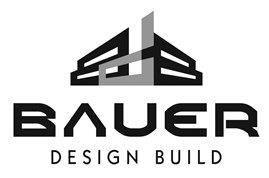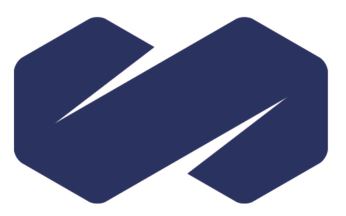Title Page
-
Noise Dosimetry Field Notes
-
Client Name:
-
Client Site
-
Location
-
Conducted on
-
Conducted by
-
The services performed by Marsh & McLennan Agency (MMA) on this project have been conducted with that level of care or skill ordinarily exercised by reputable members of the profession, practicing in the same locality under similar budget and time constraints. No other warranty is expressed or implied.
-
Information contained herein was obtained by means of on-site observations and analytical data. Conclusions of this exposure monitoring report are based on reasonably accessible information pertaining specifically to this project. However, this is not to suggest that the information obtained is a complete compilation of all existing information, which may be pertinent to this project location.
-
This report is intended for the sole use of MMA’s client. This report may not be used or relied upon by any other party without the written consent of MMA. The scope of services performed in execution of the evaluation may not be appropriate to satisfy the needs of other users, and the use or re-use of this document or the findings, conclusions, or recommendations is at the risk of said user.
Noise Dosimetry Reminders
Regulatory Refresher
-
The OSHA occupational noise exposure standard for general industry (29 CFR 1910.95) states that when employees are subjected to noise doses exceeding those shown in Table G-16, feasible administrative or engineering controls must be used to lower employee noise exposure.
If such controls fail to reduce sound to the levels shown in Table G-16, personal protective equipment must be provided and used to reduce noise exposure to within those levels.
OSHA currently allows any combination of the following to reduce occupational noise exposure levels below those shown in Table G-16:
• Hearing protective devices with a hearing conservation program,
• Engineering controls, and
• Administrative controls to effectively reduce worker exposures.
The standard also requires the employer to administer a continuing, effective hearing conservation program whenever employee noise exposures equal or exceed an 8-hour time-weighted average sound level (TWA) of 85 decibels measured on the A scale (slow response) or, equivalently, a dose of fifty percent. -
At 90 dBA TWA (PEL) all elements of a hearing conservaiton program are required (training, initial and annual audiograms, hearing protection must be provided and worn, at least two types of hearing protection are required to be offered).
85dBA TWA (AL), most elements of a hearing conservation program are required (training, initial and annual audiograms, hearing protection use is optional once the initial audiogram is completed. If an annual audiogram identifies a STS, hearing protection is required.
Noise Dosimetry Best Practices
-
Pre-sampling Walkthrough
-
1. Conduct noise screening to determine whether personal noise dosimetry is necessary. Walkthrough facility to identify any areas that are in excess of 80dB. Remember to lead by example! Conscientiously wear your hearing protection and other appropriate personal protective equipment consistently and correctly during your inspection.
a. Record noise levels on schematic diagram or draw your own floor plan of area(s) where screening was conducted.
b. Document sources of noise (e.g., machines, processes).
c. Take SLM measurements in worker's hearing zone (2-foot diameter sphere around head) and document those results.
d. Take photos of workers with improperly worn earplugs and workers in noisy areas without hearing protection (interview these workers later).
2. Interview workers in elevated noise areas >80 dBA to determine if conditions are representative.
3. If noise-screening results indicate elevated noise levels (e.g., 80 dBA or above), conduct personal noise dosimetry. Develop a noise-sampling strategy based on screening results and worker interviews.
4. Indicate to the employer how many workers you would like to sample and in what areas of the facility; this will permit them to make appropriate arrangements.
5. Schedule a date to return to the facility for full-shift sampling (Note: Make sure that it's a typical exposure day, representative of the routine high noise levels that you recorded during your noise screening).
6. If workers are on an extended workshift, then you calculate a revised AL per OSHA protocol (8 hour shift = 85, 9 = 84.2, 10=83.4, 12=82.1, 16=80) -
Full Shift Sampling
-
1. Pre-calibrate noise dosimeters, sound level meters, and octave band analyzers; fully document calibration on proper OSHA forms.
2. At the start of workshift, or immediately after an abbreviated opening conference, place noise dosimeters on workers. If related to a complaint or referral, be careful to first select workers who will address any specific concerns in the referral or complaint, as these items must be addressed. The other workers should be selected based on highest anticipated exposures.
a. Explain to each worker being sampled who you are, why you are there, and the purpose of the dosimeter. Emphasize that the dosimeter is not a speech recording device. Explain, as part of the documentation, that you will be taking pictures of them doing their work and to show how the dosimeter was worn.
b. When the dosimeter is positioned (generally at the waist), clip the microphone to the worker's shirt collar at the shoulder, close to the worker's ear. Clips should be placed in accordance with manufacturer's instructions. Position and secure any excess microphone cable to avoid snagging or inconveniencing the worker. If practical, the cord should run under the worker's shirt or coat. If possible, place the microphone on the side of the worker closest to the primary noise source, if there is one.
c. Once the dosimeter is in place, ask the worker if it feels all right, confirm that the cord is not in the way of their work, and emphasize that the worker should continue to work in a routine manner.
d. Tell the worker that you will check back regularly and to let you know right away if there is a problem with the unit or with wearing it. Instruct the worker being sampled not to remove the dosimeter unless absolutely necessary, and not to cover the microphone with a coat or outer garment or move the microphone from its installed position. Let the worker know when the dosimeter will be removed. For example, explain to the worker that you will be collecting the noise dosimeters prior to lunch, and then after lunch, you will resume sampling them.
i. If workers eat in their work area and lunch is part of the 8-hour workshift, you might consider leaving the dosimeter on during lunch.
e. Record necessary information about the worker (e.g., job title, name of department, job description, type of hearing protection worn, length of employment, frequency and duration of noise exposure) on the appropriate OSHA form.
f. Explain to the workers that you will be checking the noise dosimeter throughout the day (to ensure that the microphone is oriented properly) and taking direct reading measurements with your SLM in their hearing zone.
g. Record the time you turned on the noise dosimeter(s).
3. During dosimeter sampling, to evaluate the noise hazard(s), check in on each worker and document conditions that may contribute to their noise exposure: Take SLM readings of equipment to identify parts of machinery that are contributing to noise levels, ask workers if this is a typical day for noise exposure, record conditions of equipment/machinery and determine maintenance history, think about potential engineering controls to reduce noise levels, take photographs and include measurements to help with engineering control determination.
4. End of normal 8-hour shift:
a. Remove dosimeters and record time on OSHA form.
b. Ask worker if this was an average work day for noise exposure (normal production day vs. sampled day production).
c. Record results of dosimeter sampling on appropriate readout worksheet.
d. If this is an extended shift, it is important to document the exposure just before or at the 8-hour mark to provide the 8-hour TWA exposure for comparison against the PEL. One can document zero exposure during lunch and subtract that from the sampling time if the dosimeter is not turned off (make sure there are no loud noises during lunch that can contribute to the noise dose [e.g., radio turned high in car or lunchroom]). Once the 8-hour exposure is determined, you should continue to allow the dosimeter to collect data to determine the severity (e.g., continual noise exposure during last 2 hours of a 10-hour shift can increase severity of the citation) based on full extended-shift sampling.
e. Complete all information on OSHA noise survey report.
f. Post-calibrate noise equipment and fully document calibration; this is often done after leaving the site.
5. Notify employer of noise sample results prior to leaving worksite and note the employer's opinion of practicality of control measures.
6. Review relevant records (e.g., hearing conservation program).
7. Conduct additional interviews with employer and worker regarding employer's hearing conservation program and feasibility of engineering controls.
8. Request copies of manufacturer's instructions on machine(s) and/or processes contributing to high noise levels (can help to establish knowledge and assist with determining potential engineering controls).
9. Explain to employer that you will arrange for a closing conference with him/her to review your inspection findings. -
Post-sampling Activities
-
1. Assist the client with implementation of engineering controls and/or a hearing conservaiton program.
a. Perform a cost comparison to determine if engineering controls will be more cost effective than a hearing conservation program. As of 2011, the national average annual cost of a hearing conservation program is approximately $350 per worker.
b. Research examples of technically feasible engineering controls for the specific machine and/or process contributing to the noise levels. Start with the equipment manufacturer.
c. Start with easy solutions first.
d. Once the engineering control has been determined, contact noise-control manufacturers to obtain prices for doing your cost comparison for determining economic feasibility (engineering controls vs. hearing conservation program).
Svantek Resources
-
SV104A Tip Sheet: https://drive.google.com/file/d/1yhcoGwwe1gCfO3QJYDPV73Aul8F1ZRmg/view?usp=sharing
-
SV104A User Manual: https://drive.google.com/file/d/1iMsjp9M3JaibF_Oyk8OQ2N_jdrWDev5e/view?usp=sharing
-
-
Sample Collection
- Dosimeter Summary
-
Dosimeter #
-
Name of employee
-
Start Time
-
End Time
-
Job Activities (document job activities throughout the shift)
-
Photograph(s) of job activities
-
Field Sketch:
Notes and comments
-
undefined
















